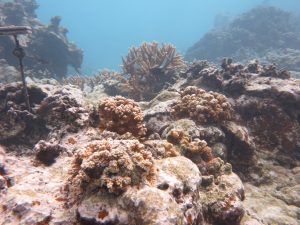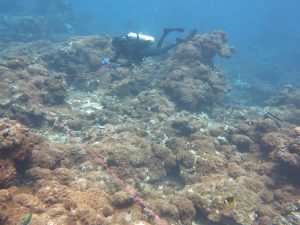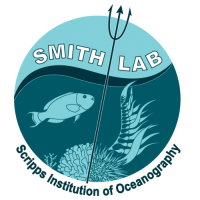Corinne Amir; Amanda Carter; Michael Fox; Maggie Johnson; Jennifer Smith
Project description: On Palmyra Atoll, the corallimorpharian Rhodactis howesii has dramatically increased in abundance and now dominates over 3 km^2 of reef (Work et al. 2018), displacing hard corals and other typically-dominant biota in the process. In response, a restoration experiment has been established within sties experiencing high infestation of corallimorph to test the efficacy of dual corallimorph removal and coral transplantation. To date, approximately 170 m^2 of corallimorph has been removed from the reef and 150 adult corals have been transplanted in its place. Furthermore, corals have been transplanted in three distinct spatial patterns, with and without neighbors and in the presence of conspecifics or heterospecifics, to assess how coral-coral interactions can either facilitate or impede growth and survival over time. Time series data regarding community-wide ecological impacts of restoration is collected using (1) an imaging a visualization data pipeline that produces highly detailed reconstructions of the benthos, (2) standardized, replicable devices called Calcification Accretion Units (CAUs), and (3) in situ diver surveys to gather a suite of coral reef health indicators including (but limited to) net reef calcification, benthic community structure, and coral growth. Methods used to produce and assess this ongoing restoration experiment can inform future efforts to mitigate corallimorph invasion throughout Palmyra and inform coral restoration programs worldwide.
Work, T. M., Aeby, G. S., Neal, B. P., Price, N. N., Conklin, E., & Pollock, A. (2018). Managing an invasive corallimorph at Palmyra Atoll National Wildlife Refuge, Line Islands, Central Pacific. Biological invasions, 1-12.




